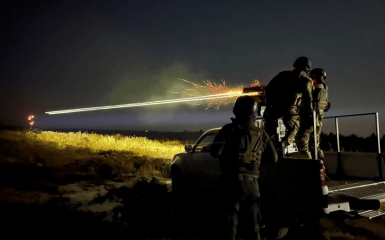On the night of November 20, Russia launched more than a hundred drones and six missiles over Ukraine. Our air defense destroyed 56 Russian drones and two Kh-59/69 missiles.
Points of attention
- The air defense of Ukraine destroyed 56 Russian drones and two Kh-59/69 missiles during the new Russian attack on the country.
- Russian troops fired more than a hundred drones and six missiles at different regions of Ukraine on the night of November 20.
- The attack was repulsed with the help of aviation, anti-aircraft missile troops, EW units and mobile fire groups.
- Air defense worked in many regions, in particular in Kyiv, Cherkasy, Poltava, Kharkiv and others.
The Air Force revealed the details of the Russian attack on Ukraine
According to the military, this night the enemy attacked the Kharkiv region with an anti-aircraft guided missile S-300 from the Belgorod region. The occupiers also fired five Kh-59/69 guided air missiles at the Dnipropetrovsk, Chernihiv and Sumy regions.
In addition, the Russians struck with guided aerial bombs and released 122 "Shakhed" and unmanned aerial vehicles of an unknown type from the regions of Kursk, Orel, and Primorsko-Akhtarsk.
The enemy's attack was repulsed by aviation, anti-aircraft missile troops, electronic warfare units, and mobile fire groups.
As of 11:00 a.m., the downing of two Kh-59/69 guided air missiles and 56 enemy drones was confirmed.

Air Defense Forces worked in Kyiv, Cherkasy, Chernihiv, Poltava, Kirovohrad, Zhytomyr, Khmelnytskyi, Sumy, Mykolaiv, Kherson, Zaporizhzhia, Dnipropetrovsk, Donetsk and Kharkiv regions.
Another 58 drones were lost in various regions. Five drones flew to Russia, one to Belarus.
What is known about the consequences of the Russian attack on Ukraine
On the evening of November 19, Russian troops launched a missile attack on the town of Pryluky in Chernihiv Oblast. As a result of the attack, a man was injured, and civilian objects were also damaged.
Anti-aircraft defense also worked in Kyiv. Several explosions rang out in the capital. According to the morning report of KMVA, the wreckage of the drones fell in the Dnipro district, where a fire allegedly broke out in a multi-story building. However, this information was not confirmed later.
Later, the local authorities specified that the wreckage of the drones was recorded in the Podilskyi and Obolonskyi districts of Kyiv.




